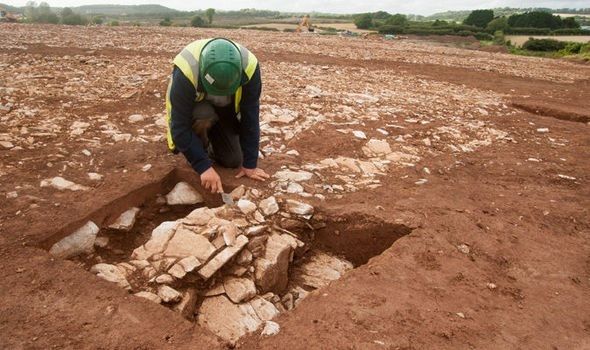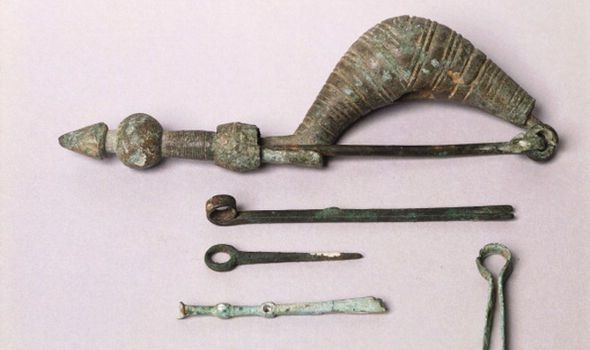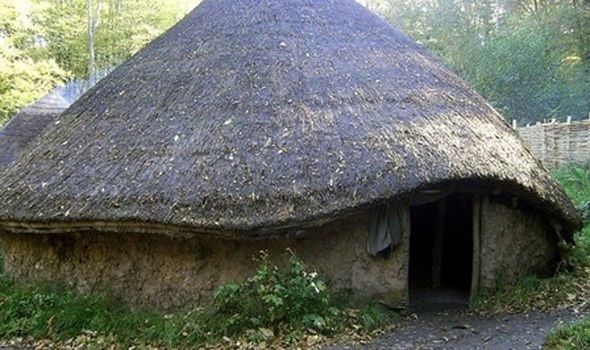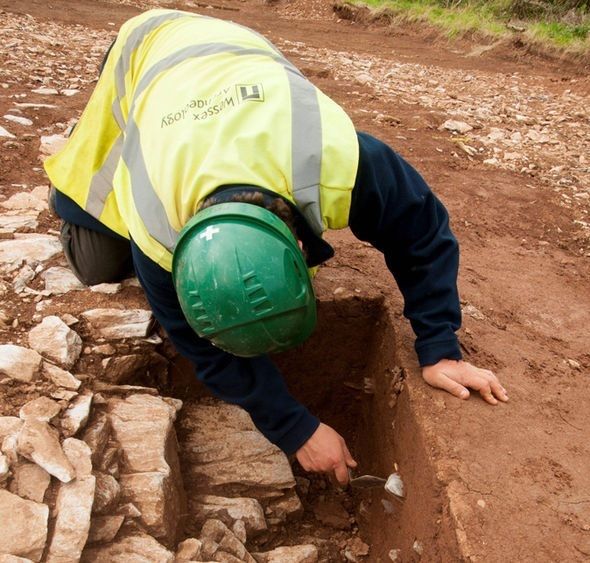Post by UKarchaeology on Sept 30, 2015 19:03:20 GMT
* (30th Sep 2015) AN ANCIENT settlement dating back more than 3,000 years has been uncovered in one of the most stunning archaeological finds in Britain in recent history.

Experts believe they have unearthed one of Britain's biggest pre-historic settlements
Archaeologists believe that the "very exciting" discovery could reveal how ancient Britons survived thousands of years ago during both the Bronze and Iron Age.
Experts say the project, found at Sherford on the edge of Plymouth, is one of the "largest investigations" in the British history.
They also believe that the great condition of the site could yield a valuable insight into the lives of those in prehistoric Britain.
The archaeological dig, which began two weeks ago, has already found Iron Age roundhouses, pottery and bone.
Andy Mayes, who is leading the excavation, said: "What's fantastic is we're looking at an unusually large area showing a whole pre-historic landscape.
"There hasn't been a great deal of disturbance on the site previously, and it's in pretty good condition under the surface, so it's a question of targeting those areas of significance.

Tools that date back to the Iron Age
"A development like this gives archaeologists a very detailed impression of pre-historic landscapes."
Mr Mayes added that the dig has also found some non-local material, suggesting long-distance trade across the country during the Iron Age.
Mr Mayes said that the design of the roundhouses are "unusual" compared to settlements found from the same time period.

An example of a Iron Age-era roundhouse
He said: "This is a lowland settlement and is not very well understood, so it's very important. I would say in terms of scale this is the largest investigation that's taken place within the area.
"We've found animal bone and shell, indicating that they would have been eating oysters on site.
"Also we would expect to find fragments of human bone, as during this period they would excarnate their dead instead of burying. They would put them on a platform to be exposed to the elements."

Mr Mayes said the find is an incredible archaeological find
He added: "We found three roundhouses which are likely to be Iron Age in date. We can see from geophysics alone that there were communities living and working on the site probably from the Bronze Age.
"People that lived and farmed on the site probably would have been part of an open settlement of farms, and each roundhouse probably had extended family living within it. They didn't last very long – probably 20-30 years."
The project is expected to take up to ten weeks to fully excavate.
(pics & source: www.express.co.uk/news/history/609030/Iron-Age-town-unearthed-largest-British-archaeological )

Experts believe they have unearthed one of Britain's biggest pre-historic settlements
Archaeologists believe that the "very exciting" discovery could reveal how ancient Britons survived thousands of years ago during both the Bronze and Iron Age.
Experts say the project, found at Sherford on the edge of Plymouth, is one of the "largest investigations" in the British history.
They also believe that the great condition of the site could yield a valuable insight into the lives of those in prehistoric Britain.
The archaeological dig, which began two weeks ago, has already found Iron Age roundhouses, pottery and bone.
Andy Mayes, who is leading the excavation, said: "What's fantastic is we're looking at an unusually large area showing a whole pre-historic landscape.
"There hasn't been a great deal of disturbance on the site previously, and it's in pretty good condition under the surface, so it's a question of targeting those areas of significance.

Tools that date back to the Iron Age
"A development like this gives archaeologists a very detailed impression of pre-historic landscapes."
Mr Mayes added that the dig has also found some non-local material, suggesting long-distance trade across the country during the Iron Age.
Mr Mayes said that the design of the roundhouses are "unusual" compared to settlements found from the same time period.

An example of a Iron Age-era roundhouse
He said: "This is a lowland settlement and is not very well understood, so it's very important. I would say in terms of scale this is the largest investigation that's taken place within the area.
"We've found animal bone and shell, indicating that they would have been eating oysters on site.
"Also we would expect to find fragments of human bone, as during this period they would excarnate their dead instead of burying. They would put them on a platform to be exposed to the elements."

Mr Mayes said the find is an incredible archaeological find
He added: "We found three roundhouses which are likely to be Iron Age in date. We can see from geophysics alone that there were communities living and working on the site probably from the Bronze Age.
"People that lived and farmed on the site probably would have been part of an open settlement of farms, and each roundhouse probably had extended family living within it. They didn't last very long – probably 20-30 years."
The project is expected to take up to ten weeks to fully excavate.
(pics & source: www.express.co.uk/news/history/609030/Iron-Age-town-unearthed-largest-British-archaeological )
